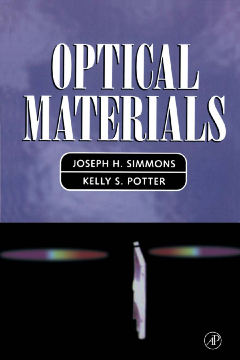
Additional Information
Book Details
Abstract
Optical Materials presents, in a unified form, the underlying physical and structural processes that determine the optical behavior of materials. It does this by combining elements from physics, optics, and materials science in a seamless manner, and introducing quantum mechanics when needed. The book groups the characteristics of optical materials into classes with similar behavior. In treating each type of material, the text pays particular attention to atomic composition and chemical makeup, electronic states and band structure, and physical microstructure so that the reader will gain insight into the kinds of materials engineering and processing conditions that are required to produce a material exhibiting a desired optical property. The physical principles are presented on many levels, including a physical explanation, followed by formal mathematical support and examples and methods of measurement. The reader may overlook the equations with no loss of comprehension, or may use the text to find appropriate equations for calculations of optical properties.
- Presents the optical properties of metals, insulators, semiconductors, laser materials, and non-linear materials
- Physical processes are discussed and quantified using precise mathematical treatment, followed by examples and a discussion of measurement methods
- Authors combine many years of expertise in condensed matter physics, classical and quantum optics, and materials science
- The text is written on many levels and will benefit the novice as well as the expert
- Explains the concept of color in materials
- Explains the non-linear optical behavior of materials in a unified form
- Appendices present rigorous derivations
For technically intermediate or advanced readers, Simmons (U. of Florida-Gainsville) and Potter (Sandia National Laboratories, Albuquerque) explore the underlying mechanisms that make optical materials what they are and determine how they behave. They group characteristics of the materials into classes with similar behavior and present a broad range of optical materials behavior in order to show which properties are held in common and which differ between various classes of materials. They emphasize atomic composition and chemical makeup, electronic states and band structure, and physical microstructure.Book News, Inc.®, Portland, OR
